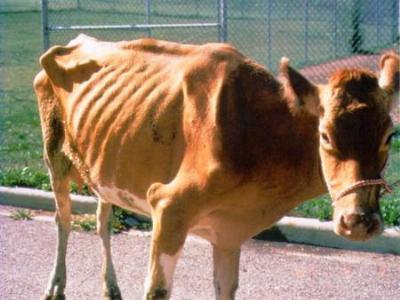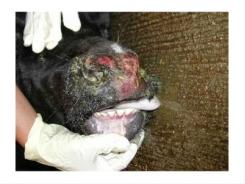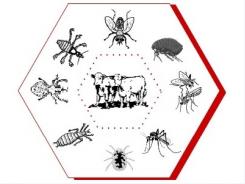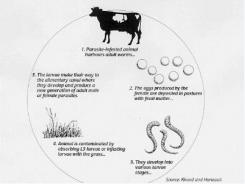Diseases of Cattle: Johnes Disease

Johne's Disease (pronounced YO-knees), or paratuberculosis, is a chronic wasting disease that causes considerable production losses in adult cattle, sheep, goats, deer, llamas, elk, and bison, and other ruminants. The disease is caused by Mycobacterium paratuberculosis, a bacterium related to tuberculosis.
Johne's disease typically starts as an infection in calves, though visible signs do not generally appear until cattle are 2 to 5 years of age (and sometimes much older). The infection is difficult to detect in its early stages. This bacterium causes an inflamed intestinal tract that results in severe weight loss and diarrhea and lower milk production. Infected cattle frequently eat well, and look bright, however, they appear to be unthrifty. Body temperature may or may not be elevated. There is no cure for Johne's disease once an animal becomes infected.
Eradication of Johne's disease is extremely difficult because of its insidious nature, long incubation period, difficulty in early detection, and major management changes necessary to prevent and eradicate it. Consultation and action by a veterinarian experienced in the management of Johne's disease is necessary for the development of a herd-control and eradication program.
Johne's disease has been reported in almost all countries around the world.
Related news
Tools

Phối trộn thức ăn chăn nuôi

Pha dung dịch thủy canh

Định mức cho tôm ăn

Phối trộn phân bón NPK

Xác định tỷ lệ tôm sống

Chuyển đổi đơn vị phân bón

Xác định công suất sục khí

Chuyển đổi đơn vị tôm

Tính diện tích nhà kính

Tính thể tích ao




 Diseases of Cattle: Leptospirosis
Diseases of Cattle: Leptospirosis  Diseases of Cattle: Internal parasites
Diseases of Cattle: Internal parasites